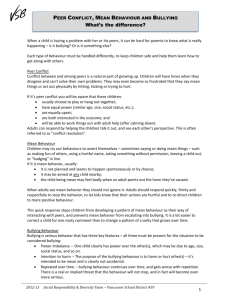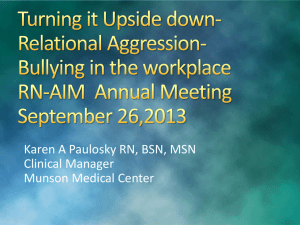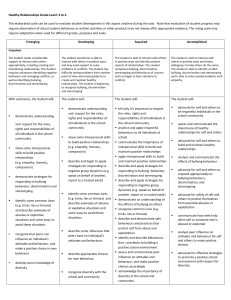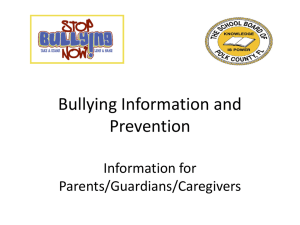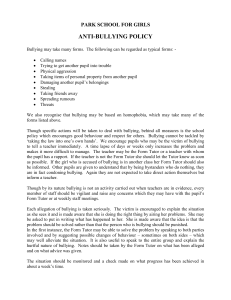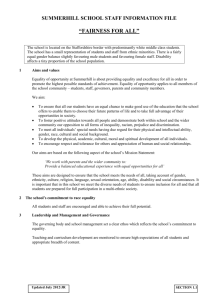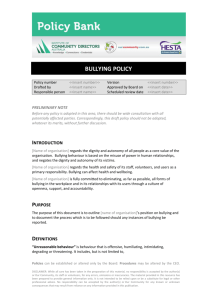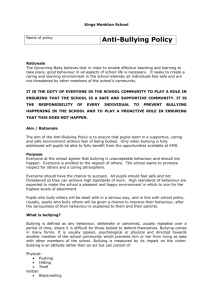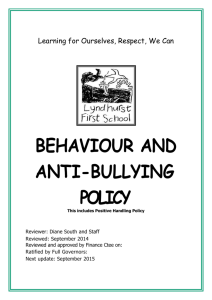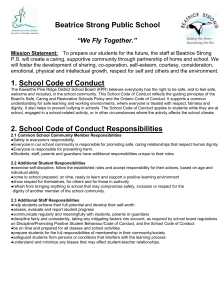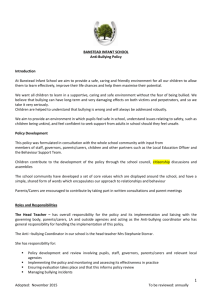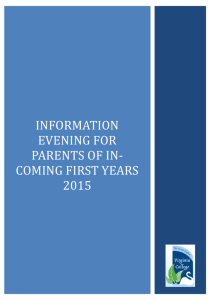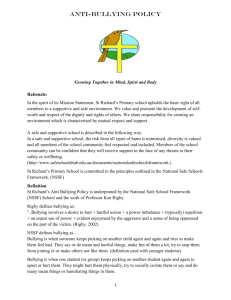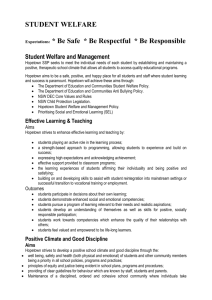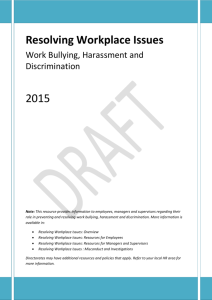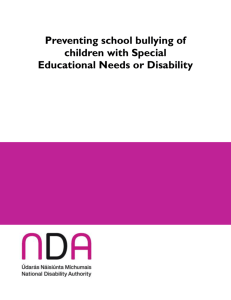jacintakitt
advertisement
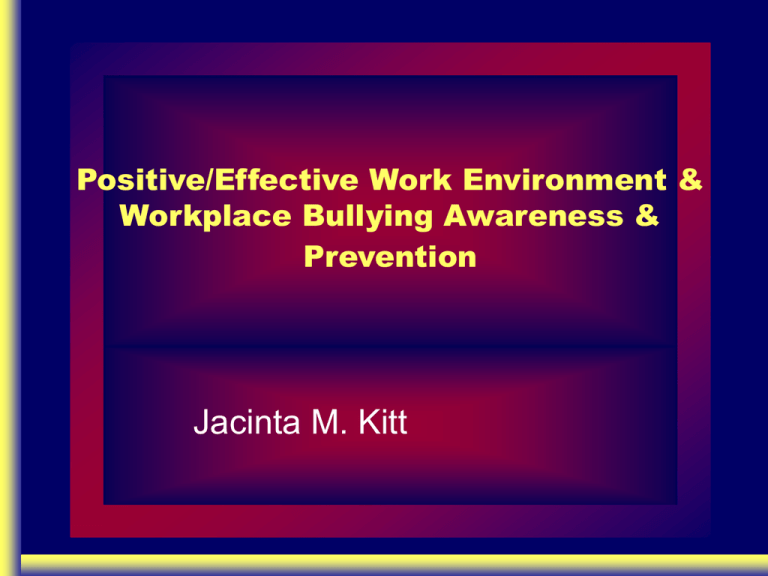
Positive/Effective Work Environment & Workplace Bullying Awareness & Prevention Jacinta M. Kitt Positive / effective work environment Definition A work environment that provides a high quality service in an atmosphere of respect, co-operation, openness & equality. Creating and maintaining positive relationships at work Positive language and behaviour Encouragement and recognition Listen as well as talk Beware of non-verbal messages Discuss and resolve conflict Address and challenge inappropriate behaviour without personal criticism Show compassion warmth and good humour Don’t take yourself too seriously The Manager’s Role Being an effective manager Modelling appropriate interpersonal behaviour Using effective communication skills to deal with difficult situations Emotional & Social Intelligence Fine-tuned and insightful Self-awareness and Self-Management Positive and productive relations and interaction with others Good Self Managers Have good emotional self control Tend to be even tempered Can be passionate Think clearly when they are experiencing strong feelings Make decisions based on their hearts & their heads Stress as a Social Issue Toxic relationships are considered to be as major a risk factor for disease & death as smoking, physical inactivity, obesity, high blood pressure or cholesterol. Social Stressors at Work Workplace bullying or harassment Poor management practices Toxic inter-personal behaviours What is inappropriate interpersonal behaviour in the workplace? Inappropriate interpersonal behaviour is behaviour that impacts negatively on a person’s ability to do their job. Why managers don’t intevene: Don’t know what to do & lack skills Have skills (been trained) but lack confidence Choose to ignore because it will detract from time & energy spent on task No point because they (the manager) will not be supported by the organisation Haven’t done anything in the past - why now? Fail to identify behaviours as problematic Rayner & McIvor, Uk Dignity at Work Project, 2006 What is bullying? Heinz Leymann Bullying is the systematic erosion of: a person’s possibility of communicating their reputation their relationships the quality of their work/school/family life health Organisational Responses to Bullying Dismissive Minimum Compliance Reactive Proactive Organisational Beliefs & Attitudes Bullying is a form of abuse, with serious individual & organisational effects. We have to do something. Creating a bullying free environment will have knock on beneficial effects on effectiveness & productivity. Proactive The organisation’s culture & climate can prevent or promote bullying. Bullying will not thrive in an organisation with a positive effective work environment. The organisation’s response must cover prevention, intervention & minimisation. Problems are more quickly resolved when aired & dealt with than when repressed or hidden. It is the organisation’s responsibility to provide a psychologically safe working environment. Safety, Health & Welfare at Work Act Code of Practice Prevention & Resolution of Bullying at Work Policy & Procedures (formal & informal) Clear responsibilities (re prevention) Communication Monitoring (incidents) Training & supervision Review Access to “contact person” Preventing Bullying Anti- Bullying Policies & Procedures important & necessary. Anti-Bullying Philosophy absolutely vital. Inter-personal Behaviour Performance issue Professional standards Potential for stress Prevents bullying Psychologically safe environment Positively good for you



